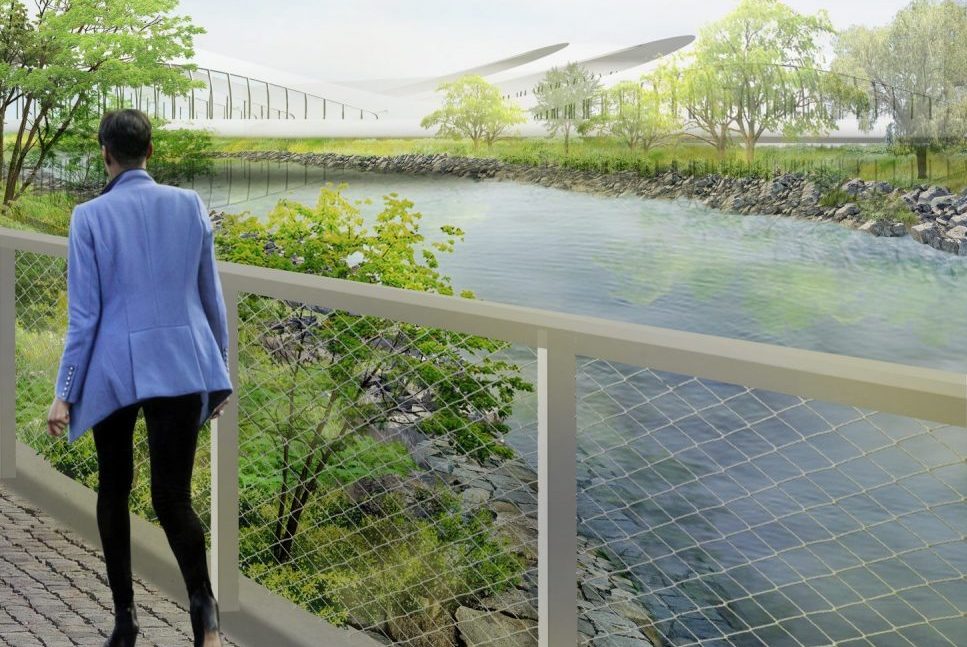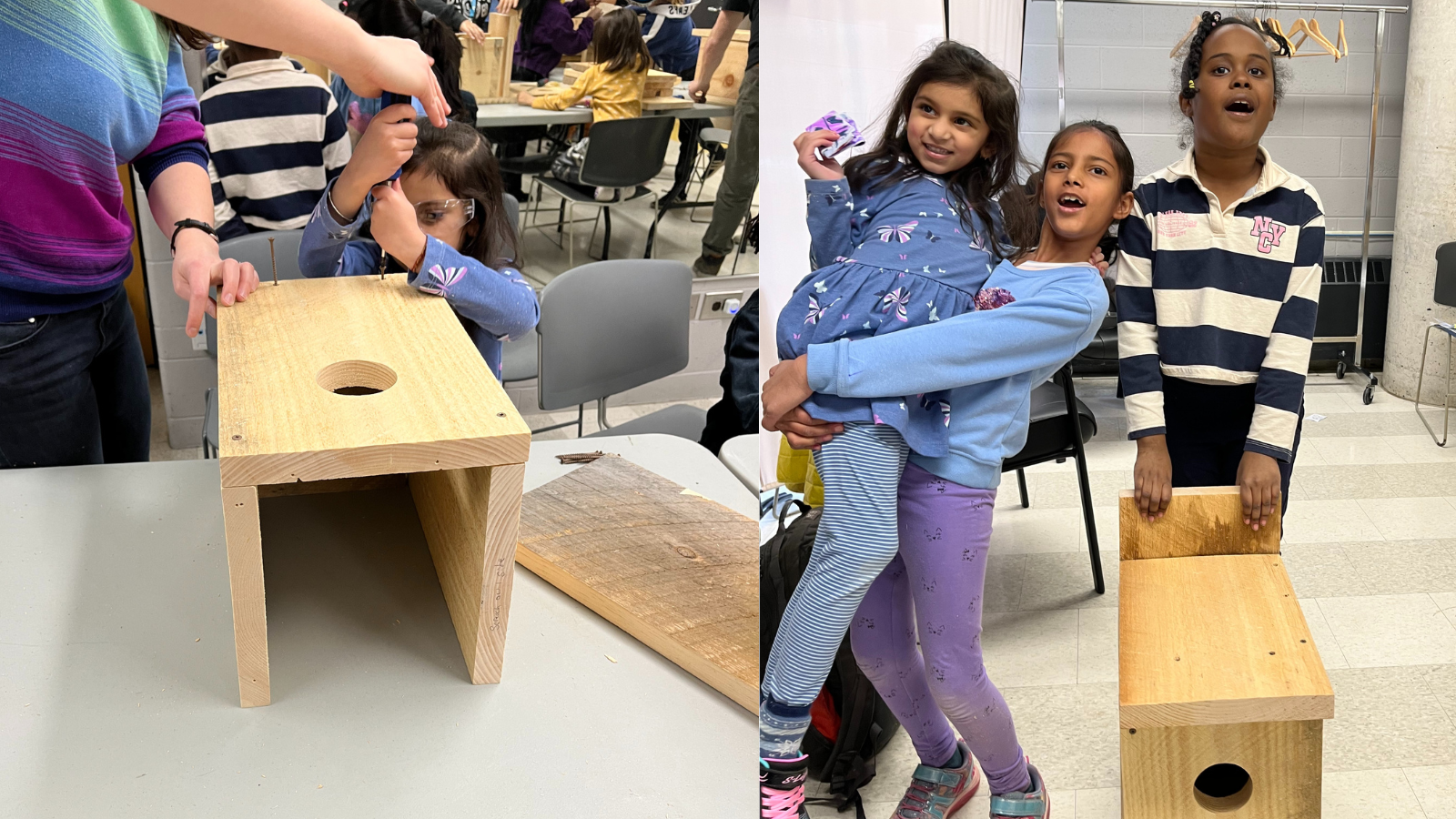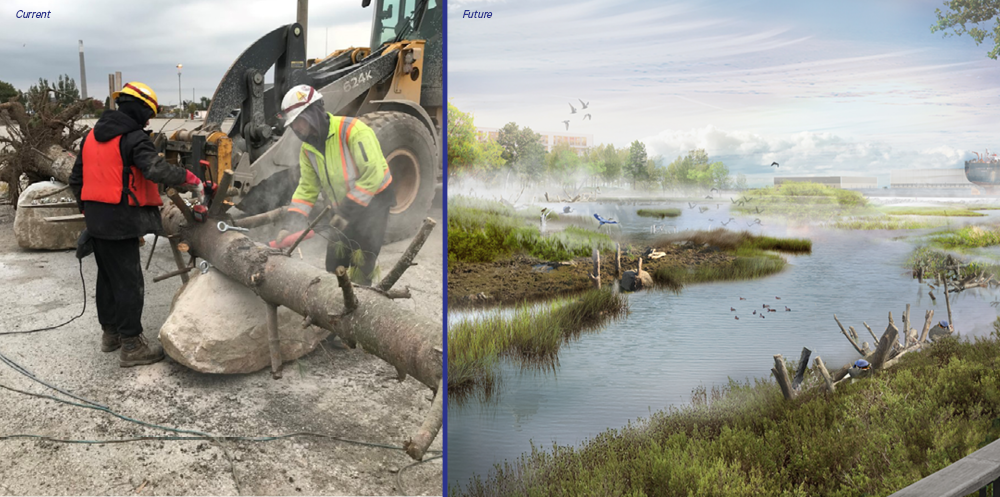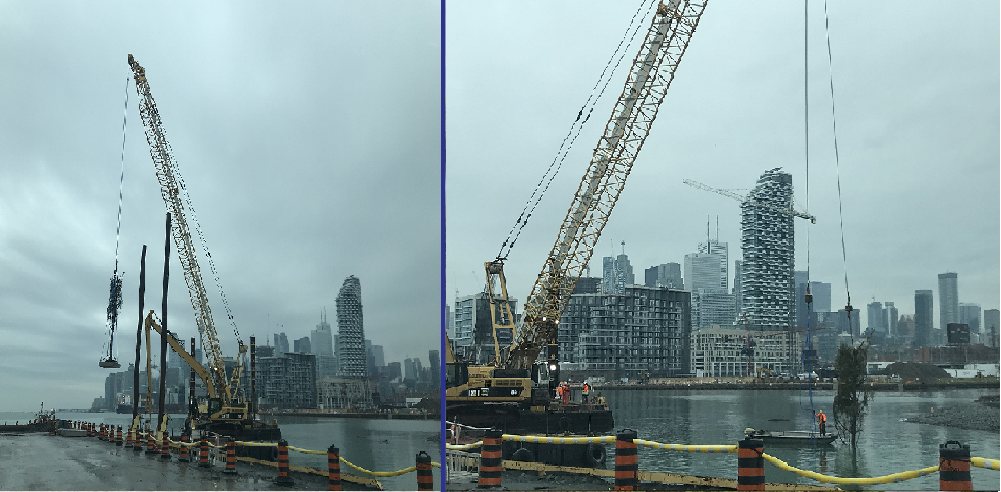Ashbridge’s Bay Marsh was once the largest wetlands on the Great Lakes, and one of the most extensive freshwater coastal wetlands in Eastern North America. By 1922, the marsh had been filled in to create more than 200 hectares of land, as part of plans to create an industrial and shipping hub. More on this area’s industrial past.
Today, the Port Lands are transforming again. This time the design will support sustainability and revive the natural characteristics of the area. And that’s just part of an overall design that will create a healthy natural ecosystem in an urban context.
What Kind of Habitats Are We Building?
By extending the area located around Essroc Quay, we’re creating new open spaces for a myriad of aquatic species. We are working closely with Toronto and Region Conservation Authority (TRCA), the City of Toronto and other stakeholders to identify what is required to create sustainable, thriving habitats for fish and other aquatic species.
River Valley

The Don River ravine system stretches from Lake Ontario north through the city, connecting communities and habitats as it weaves its way through the urban fabric. It’s a major migration path for animals of all kinds and provides habitats for a diversity of wildlife, something that is critical for the city’s biodiversity.
Once the new river valley is complete, it will connect to this system. We’ve worked with Toronto and Region Conservation (TRCA) to make sure birds can find homes in this new green space.
For optimal protection, nesting species require hollowed out openings to place their nests and raise their young. Usually these species rely on dead and living trees to place their nests. However, cavity trees take a long time to grow, so nest boxes are a quicker solution. These boxes are designed for specific species and placed in an optimal location for their use.

Aquatic Habitat
Aquatic species depend on lush vegetation for food and shelter. Vegetation also protects the shoreline from erosion caused by flooding and water currents.
Unfortunately, the yearly dredging of silt from the bottom of the Don River and Keating Channel has stunted vegetation growth in the local habitat. Debris maintenance along the Keating Channel has also disturbed the area’s aquatic habitat, impairing the health of the ecosystem and causing a loss in fish diversity. This project will strengthen the local habitat by planting vegetation to promote the regrowth of a healthy, robust aquatic ecosystem.
Creating aquatic habitat also means creating space for fish to hide while they eat, rest from migration and lay their eggs. A diversity of shelters such as vegetation and shallow water areas provides the fish an appropriate environment to survive.
Our design includes shallow rock shoal shelters and two coves located on the north and west embankment of Keating Channel. These shelters will improve the habitat around Essroc Quay, creating a sloped shoreline with shallow pockets of water and additional shelters for fish.


In spring 2019, marine landscapers started placing those trees into the habitat coves. The trees will be secured in place using stone.
Fish Diversity
TRCA has noted that the Keating Channel has some of the lowest fish diversity in Toronto’s Inner Harbour. Developing the area’s habitat will help restore the fish populations. It’s important fish find a quality habitat in the Keating channel since it is an important migration corridor between Lake Ontario and the Don River. This diversity will be able to tell us how healthy the ecosystem is. Developing the natural habitat around Essroc Quay through the Cherry Street Lakefilling project has already led to a major increase in habitat diversity in the Inner Harbour of Lake Ontario.

Waterfront Toronto’s commitment to restoring natural habitats
As part of our mandate, we’re committed to restoring the health of aquatic habitats in all projects we undertake along the water’s edge. To achieve this objective, we have been a supporting member of Aquatic Habitat Toronto (AHT) since its formation. This partnership helps us ensure that waterfront projects incorporate improvements to aquatic habitats and to conduct studies on the health of the aquatic ecosystems on the lakefront.
We’ve made some great progress thanks to this partnership. To date, we’ve constructed over 11 hectares of aquatic habitat through numerous projects, including our WaveDecks, the Portland Slip, as well as Mimico and Port Union waterfront parks. These projects have had a significant positive impact on aquatic communities. Monitoring by AHT demonstrated that the number of fish species caught in the Toronto inner harbour increased from five to 17 from 2001 to 2009. There are also greater numbers of key fish species including the emerald shiner, northern pike and round whitefish.